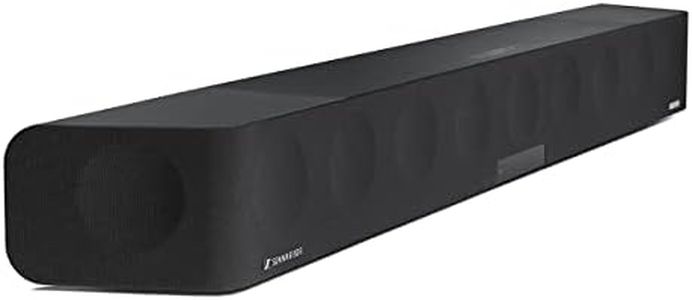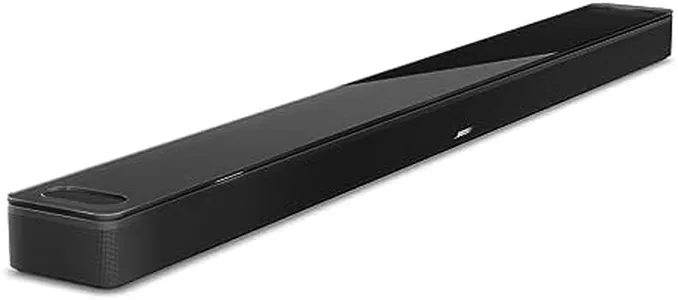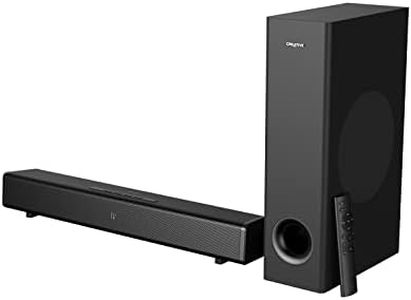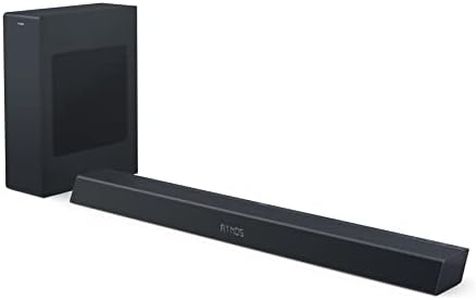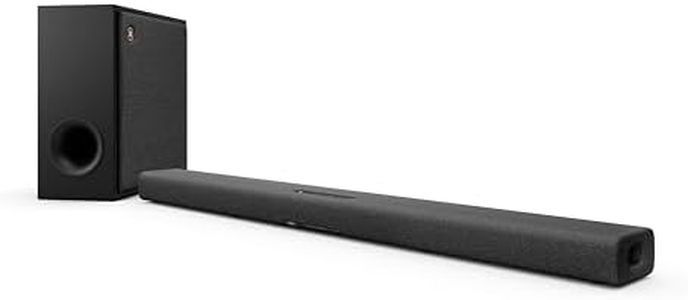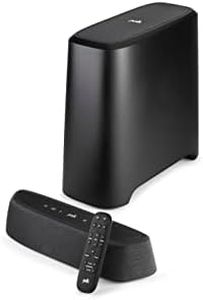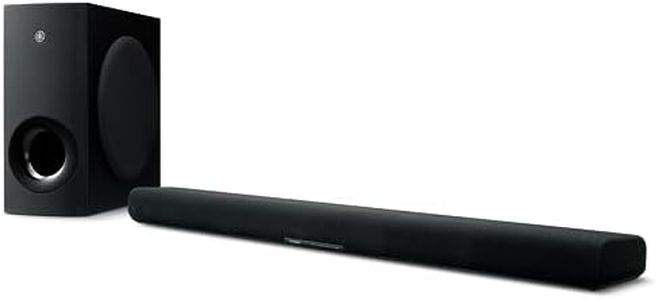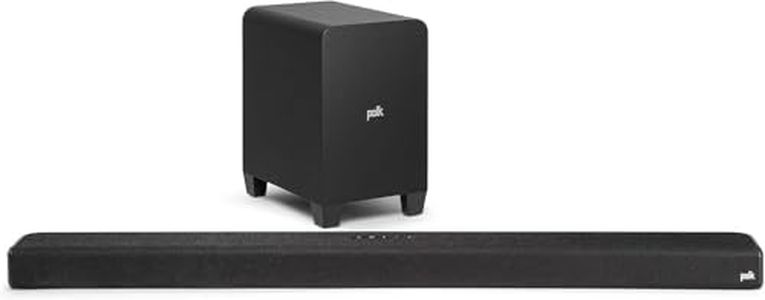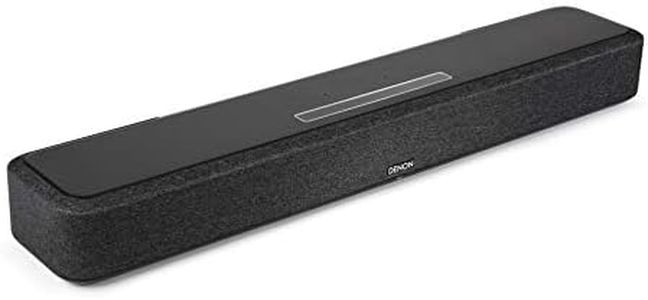We Use CookiesWe use cookies to enhance the security, performance,
functionality and for analytical and promotional activities. By continuing to browse this site you
are agreeing to our privacy policy
10 Best Dolby Atmos Soundbars
From leading brands and best sellers available on the web.Buying Guide for the Best Dolby Atmos Soundbars
Shopping for a Dolby Atmos soundbar can be exciting, but it's important to focus on your space, listening habits, and entertainment needs. Dolby Atmos soundbars are designed to deliver immersive audio by creating a sense of height — making movie nights, gaming, and music more engaging as sound moves around you. To pick the best one for yourself, you should learn about the most important specifications and understand how they fit your home environment and the way you use your soundbar.Speaker ChannelsThe number of speaker channels tells you how many physical sound sources the soundbar uses to create a surround sound effect. For Dolby Atmos, you'll see numbers like 3.1.2, 5.1.2 or 7.1.4, where the first is the number of main channels, the second is the subwoofer, and the third is the 'height' speakers for overhead sound. A basic Dolby Atmos soundbar might have '2' height channels, while more advanced ones can have '4.' More channels can create a richer, more enveloping experience, but you should consider the size of your room — smaller rooms often don't need as many channels since sound can bounce well off the walls, while larger spaces are better suited for more channels.
Physical Size and PlacementSoundbars come in different shapes and sizes, and it's important to choose one that fits your TV setup and room. A longer soundbar may be ideal for a wider TV and bigger rooms, helping fill the space with sound. However, if your TV stand is small or you're mounting the TV on the wall, a compact soundbar can save space while still delivering strong audio. Decide whether you'll place the soundbar in front of the TV or mount it, and measure the area to ensure a good fit.
Connectivity OptionsConnectivity refers to how you’ll hook up your soundbar to your TV and other devices. Key options include HDMI eARC/ARC (for the best audio quality and simple connection), optical audio, Bluetooth (for wireless streaming), and Wi-Fi for advanced features. HDMI eARC is usually preferred for Dolby Atmos since it supports high-quality sound, but if your TV doesn't have it, optical audio is a fallback (but with some limitations). Consider how you'll use your soundbar — if you want to stream music from your phone or smart devices, Bluetooth and Wi-Fi are helpful.
Subwoofer and Extra SpeakersMany Dolby Atmos soundbars come with a separate subwoofer for deeper bass, and some include additional rear speakers to boost the surround effect. A wireless subwoofer can be placed anywhere in the room, filling your space with rich low-end sounds, which is great for action movies or gaming. Extra rear speakers can make movies truly immersive, but if you prefer a simpler setup or have a smaller space, a built-in or no-subwoofer option could suffice. Choose based on how important deep bass and full surround sound are to your viewing and listening habits.
Supported Audio FormatsWhile you're shopping for a Dolby Atmos soundbar, make sure it actually supports Dolby Atmos playback, but also check if it handles other formats like DTS:X or standard Dolby Digital. Greater compatibility means you'll get the best sound from all your content, not just Atmos-enabled sources. If you watch a lot of Blu-rays, stream from various services, or game on different consoles, wide support ensures you always enjoy quality sound.
Smart Features and Voice ControlSome soundbars come with smart features, like built-in voice assistants (Alexa, Google Assistant), integration with smart home systems, or app controls. These make it easy to adjust settings, stream music, or check the weather with your voice or a mobile app. If you already use smart devices, choosing a soundbar that fits into your ecosystem can make your home entertainment more seamless. If you prefer things simple, you may not need these extras.
